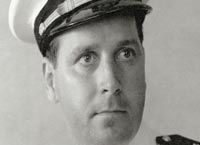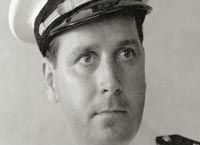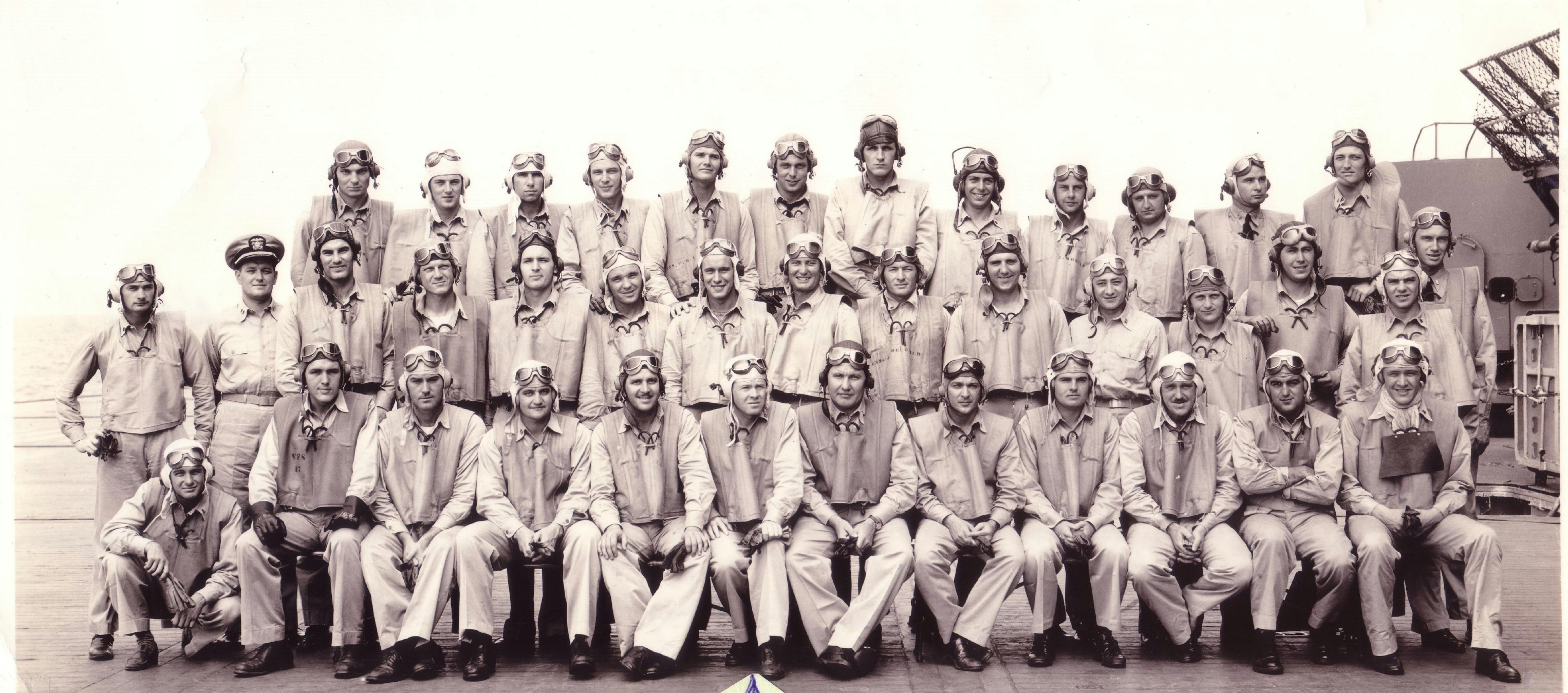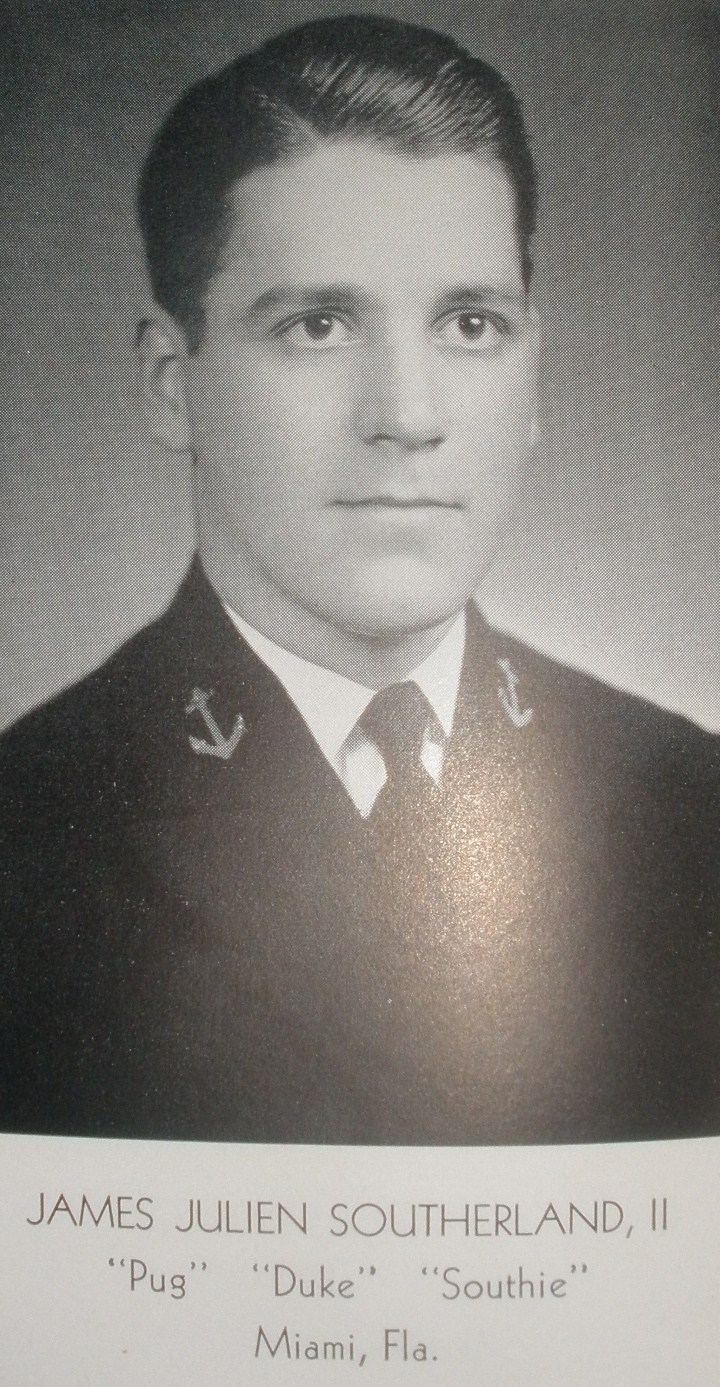At the beginning of the Battle of Guadalcanal, August 7, 1942, United States forces shelled Guadalcanal and neighboring Tulagi in the Solomon Islands. Soon after the attack began, 27 Japanese bombers and an escort of 17 fighters took off from Rabaul, Japan's stronghold and strategic base in the South Pacific. Their mission was to bomb the ships that were supporting the American attack.
Southerland shot down the first Japanese aircraft of the Guadalcanal campaign, a G4M1 "Betty" bomber of the 4th Kokutai, under the command of Shizuo Yamada. After shooting down a second bomber, Southerland was engaged in a dogfight with an A6M2 "Zero" of the Tainan Kokutai. He lined up the Zero in his sights only to find his guns would not fire, probably due to damage from fire by the tailgunner from the second bomber he had downed. Although he was now defenseless, Southerland had to stay in the fight. Two more Zeros engaged him, but he successfully outmaneuvered all three of them. The dogfight was spotted by Saburo Sakai who felt the deftly handled Wildcat was winning the engagement. Sakai described the duel in his autobiography:
Southerland and Sakai were soon engaged in one of the most legendary dogfights in aviation history. After an extended battle in which both pilots gained and lost the upper hand, Sakai finally shot down Southerland's Wildcat, striking it below the left wing root with his 20mm cannon. As Southerland bailed out of his doomed Wildcat his .45 caliber automatic pistol caught in the cockpit. He managed to free himself but lost his pistol, leaving him weaponless, wounded, and alone behind enemy lines.
Suffering from eleven wounds, shock and exhaustion, Southerland struggled through the brush, carefully evading Japanese soldiers. He finally reached the coast, where he was found by some natives, who at the risk of their own lives fed him and treated his wounds. With their assistance, he eluded the Japanese ground forces and returned to American lines. Southerland was evacuated from Guadalcanal on the first patrol boat to land at Henderson Field, on August 20.
Both pilots survived the war to write their accounts, making it one of the best documented dogfights of WWII. On February 14, 1998 the wreckage of Southerland's Wildcat was found. Investigation of the remains has confirmed both Southerland's and Sakai's accounts of the dogfight.
Southerland later fought in the Battle of Okinawa in 1945. By then a commander and leading VF-83 aboard the USS Essex, he shot down two Ki-61 "Tonys". He became a confirmed ace in April of that year when he downed a A6M "Zeke" while serving aboard the USS Langley.
Following the war, Southerland became a flight instructor at the U.S. Naval Academy. He was killed in a jet training accident in 1949 during takeoff from a carrier off the Florida coast.
At the beginning of the Battle of Guadalcanal, August 7, 1942, United States forces shelled Guadalcanal and neighboring Tulagi in the Solomon Islands. Soon after the attack began, 27 Japanese bombers and an escort of 17 fighters took off from Rabaul, Japan's stronghold and strategic base in the South Pacific. Their mission was to bomb the ships that were supporting the American attack.
Southerland shot down the first Japanese aircraft of the Guadalcanal campaign, a G4M1 "Betty" bomber of the 4th Kokutai, under the command of Shizuo Yamada. After shooting down a second bomber, Southerland was engaged in a dogfight with an A6M2 "Zero" of the Tainan Kokutai. He lined up the Zero in his sights only to find his guns would not fire, probably due to damage from fire by the tailgunner from the second bomber he had downed. Although he was now defenseless, Southerland had to stay in the fight. Two more Zeros engaged him, but he successfully outmaneuvered all three of them. The dogfight was spotted by Saburo Sakai who felt the deftly handled Wildcat was winning the engagement. Sakai described the duel in his autobiography:
Southerland and Sakai were soon engaged in one of the most legendary dogfights in aviation history. After an extended battle in which both pilots gained and lost the upper hand, Sakai finally shot down Southerland's Wildcat, striking it below the left wing root with his 20mm cannon. As Southerland bailed out of his doomed Wildcat his .45 caliber automatic pistol caught in the cockpit. He managed to free himself but lost his pistol, leaving him weaponless, wounded, and alone behind enemy lines.
Suffering from eleven wounds, shock and exhaustion, Southerland struggled through the brush, carefully evading Japanese soldiers. He finally reached the coast, where he was found by some natives, who at the risk of their own lives fed him and treated his wounds. With their assistance, he eluded the Japanese ground forces and returned to American lines. Southerland was evacuated from Guadalcanal on the first patrol boat to land at Henderson Field, on August 20.
Both pilots survived the war to write their accounts, making it one of the best documented dogfights of WWII. On February 14, 1998 the wreckage of Southerland's Wildcat was found. Investigation of the remains has confirmed both Southerland's and Sakai's accounts of the dogfight.
Southerland later fought in the Battle of Okinawa in 1945. By then a commander and leading VF-83 aboard the USS Essex, he shot down two Ki-61 "Tonys". He became a confirmed ace in April of that year when he downed a A6M "Zeke" while serving aboard the USS Langley.
Following the war, Southerland became a flight instructor at the U.S. Naval Academy. He was killed in a jet training accident in 1949 during takeoff from a carrier off the Florida coast.
Family Members
Sponsored by Ancestry
Advertisement
Advertisement













